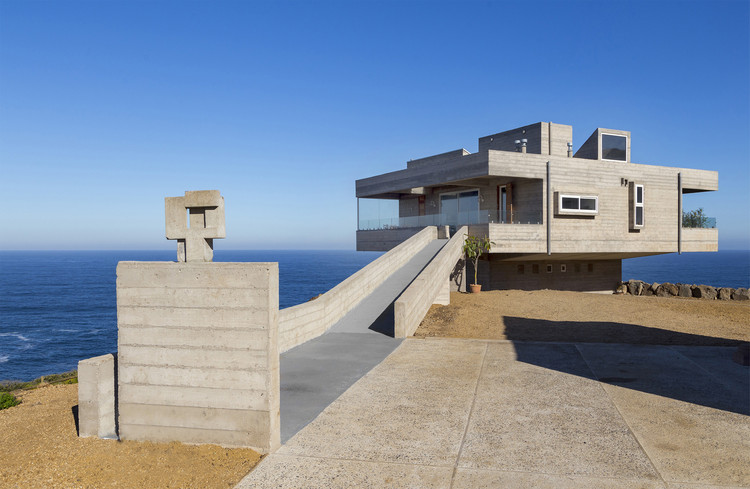
Concrete and sustainability are two words that are often considered incompatible. Used as early as the Roman era, concrete has shaped much of our built environment, being the most widely used manufactured material in the planet thanks to its resistance, versatility, cost-effectiveness, and accessibility, among other inherent benefits. Its popular use in buildings and infrastructure forms the foundations of cities, connects communities, and will continue to play a vital role in providing solutions to the challenges of the future – especially as cities must respond to a growing global population. But with cement as its key ingredient, it also comes with several environmental costs, being responsible for at least 8% of the world’s carbon emissions in a climate-change context. However, it doesn’t necessarily have to be that way. With the rise of innovative technologies and products, there are many ways to make concrete greener.

The potential of concrete in sustainable architecture
As architecture continues to shift towards environmental sustainability, the demand for low-carbon materials is increasing exponentially in the construction industry – and the concrete sector is no exception. While improvements in production processes have significantly reduced the material’s lifetime carbon footprint, there is still a long way to go in order to reach optimal levels.
Nowadays, some ways to create more eco-friendly concrete structures include the following: building with a carbon-absorbing type of concrete, carbon sequestration processes, and the use of insulated concrete form (ICF) walls, energy-efficient structures that combine the benefits of concrete with integral insulation. On top of that, concrete is reusable, meaning that even after a project is demolished, fragments can be used for pavement, landscaping mulch, oceanic reef habitants, or even act as a replacement for aggregates in concrete mixtures.

Nonetheless, the true path towards more sustainable concrete mainly lies in two principles: building from the start with the smallest carbon footprint possible and building long-lasting structures that won’t need to be replaced or repaired. Typically, a concrete producer will increase strength and durability by adding more cement – however, most of the CO2 is released as a result of the chemical reaction that turns limestone into cement. Therefore, considering that not much can be done to avoid that, one viable alternative is to simply decrease the amount of cement used in concrete. With this in mind, world-leader in Smart Concrete technologies Kryton has developed a wide variety of products that waterproof, repair, and protect concrete structures, extending their lifecycle without adding more carbon-releasing cement. In other words, optimizing sustainability without sacrificing design.


Less cement, more durability
There are a number of ways to reduce the cement in concrete mixes – and hence lower its lifetime carbon footprint –, whether it be through using larger, well-graded aggregates that create fewer voids to fill with paste, or through the use of high-strength concrete that allows workers to construct elements using thinner sections. In addition, hardening or water-reducing admixtures can maintain the strength of a concrete mix even after reducing its cement content, making for the most efficient use of the remaining cement.

For example, Kryton’s admixture Hard-Cem can enhance the concrete’s durability against abrasion and erosion, replacing toxic dry shake hardeners and sealers. When added to the mix, the product’s properties increase the hardness of the concrete paste, reducing fine and coarse aggregate exposure that causes degradation. This allows for the material to double its lifespan and, at the same time, offers less installation and maintenance costs; all while eliminating the need to replace with a new cement-rich set of concrete that contributes to the carbon footprint.
It is well known that the corrosion of reinforcing steel and other embedded metals is the leading cause of concrete deterioration worldwide. So, products that prevent it – and thus add resistance without relying on more cement – should be a primary consideration for any architect or designer of concrete structures, especially for infrastructure projects. With this in mind, the Krystol Internal Membrane (KIM), a hydrophilic crystalline admixture, was created in 1980 to create permanently waterproof concrete. By growing crystals to fill and block the movement of water and waterborne salt from reaching the reinforcing steel, the smart concrete solution effectively acts as a barrier that lowers the permeability of the material. In this way, KIM provides longevity and cost-effectiveness without the need for toxic elements that contain volatile organic compounds (VOCs).

To complement the use of admixtures, Maturix Smart Concrete Sensors can be embedded on the material to transmit and monitor real-time temperature data and calculate strength. Since structures tend to be over-designed for safety, this makes it possible for the mixture to optimize cement use and, consequently, reduce cement content.

With the help of these products, lasting concrete can be applied to a wide range of projects, from residential buildings and multi-use towers to skate parks, or complex and abrasive environments such as industrial floors, dams, water tanks, sewage plants, slabs, and foundation walls.





Towards a more sustainable concrete construction environment
When it comes to concrete, it is clear that there are many misconceptions, especially regarding sustainability. Even though it is true that the traditional use of the material has had a tremendous negative impact on the environment, today many technological advances and innovative products have the potential of leaving this notion in the past.
Whether it be through crystalline technologies, durability-enhancing methods, real-time monitoring sensors, or many other smart solutions, it is clear that concrete construction can be a great ally to sustainable architecture. However, this is only possible if we continue harnessing and leveraging innovative products that will be key to unlocking the sector’s eco-friendly future. Ultimately, it all comes down to using materials better, smarter, and more efficiently. Only then can we fully aim to combine the inherent qualities of all kinds of materials with sustainability. And only then can we point towards a potential future of net-zero, carbon-neutral buildings that contribute to a healthier global construction environment.
For more information on Smart Concrete technologies, check out this link.













